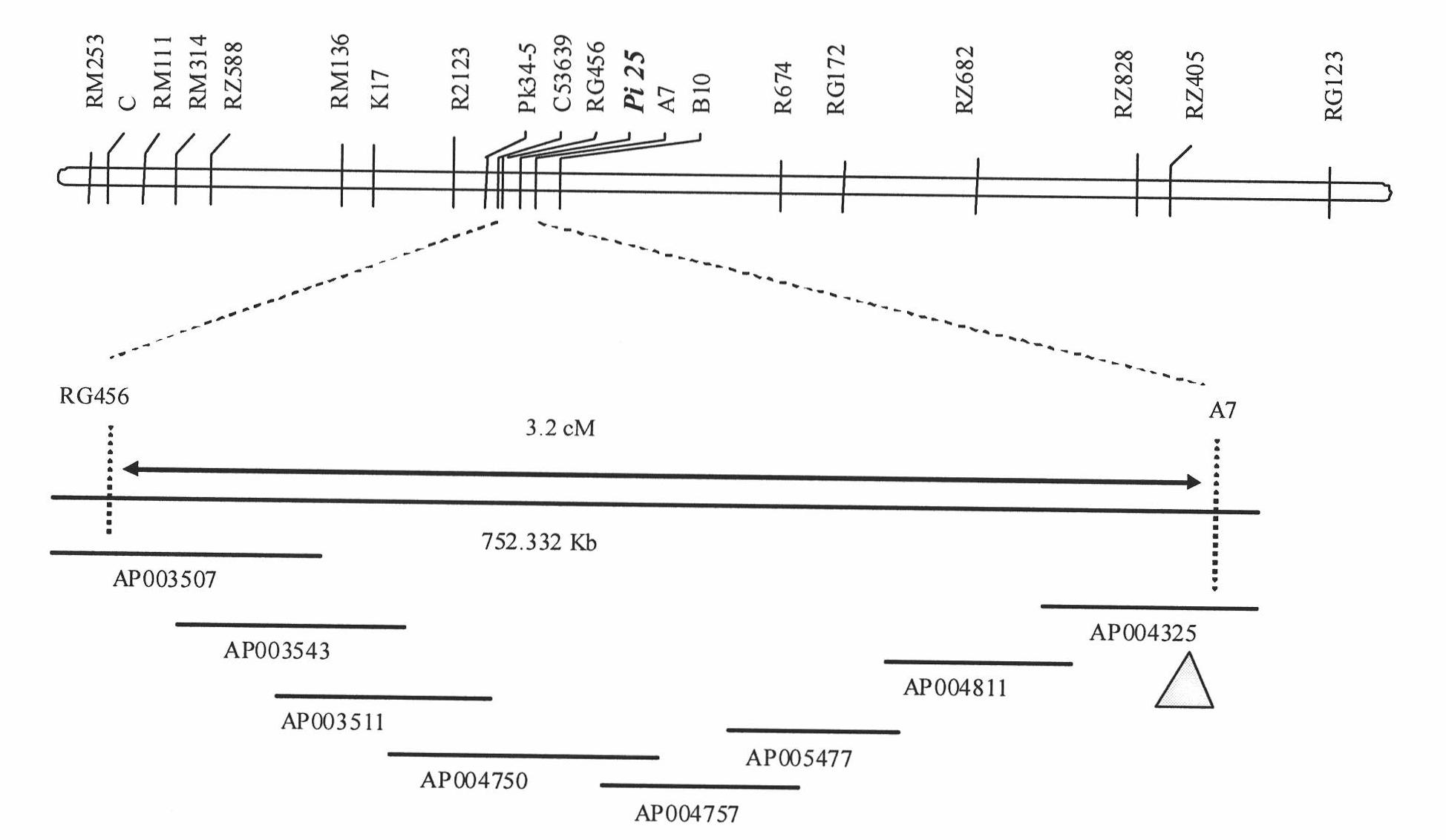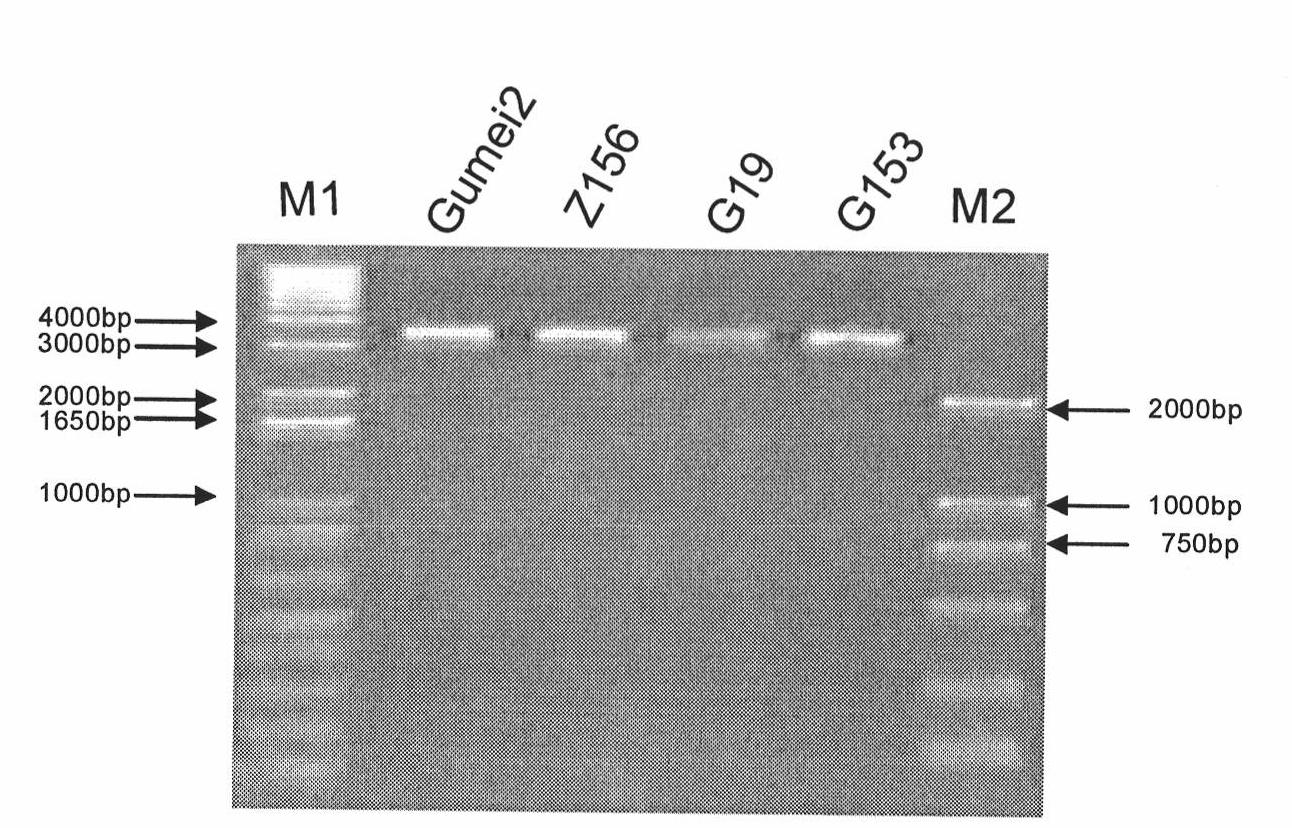Coding region of rice blast resistant gene Pi 25 and application thereof
A technology for a rice blast resistance gene and coding region, which is applied to the field of isolation, cloning and application of the coding region of the rice blast resistance gene Pi25, can solve problems such as unproven problems, and achieve the effects of improving the efficiency of variety selection and shortening the breeding time.
- Summary
- Abstract
- Description
- Claims
- Application Information
AI Technical Summary
Problems solved by technology
Method used
Image
Examples
Embodiment 1
[0033] Example 1: Genetic Analysis and Preliminary Mapping of Rice Blast Resistance Gene Pi25
[0034] First, in order to discover and identify new blast resistance genes, the indica rice resistant variety Gumei 2 was crossed with the indica susceptible variety Zhong 156, and a recombinant inbred line consisting of 304 individual plants was constructed by single-seed transmission method , using this recombinant inbred line population to conduct an in-depth study on the rice blast resistance inheritance of Gumei 2, and identified and mapped Pi24, Pi25, Pi26 and Pib gm Four blast resistance major genes and more than ten QTLs. Pi25 is a gene for both seedling blast and panicle blast resistance, located on chromosome 6 of rice. (Such as figure 1 shown)
Embodiment 2
[0035] Example 2: Fine Mapping of New Rice Blast Resistance Gene Pi25
[0036] The invention utilizes map-position cloning and bioinformatics methods to clone the coding region of the resistance gene Pi25. In order to fine-tune the main effect gene, a new recombinant inbred line (containing 1384 strain) for fine mapping of Pi25, and determined that Pi25 was located between the markers RG456 and A7. Using bioinformatics methods, it was found that there were 8 overlapping bacterial artificial chromosome (BAC) clones between RG456 and A7, with a total of 132 candidate genes, and one gene related to NB-ARC structural resistance was located on the BAC clone AP004325, so the The resistance-related gene located on AP004325 was identified as a candidate gene. ( figure 1 )
Embodiment 3
[0037] Example 3: Isolation and sequence analysis of the coding region of the rice blast resistance gene Pi25 candidate gene
[0038] In order to isolate the candidate gene of Pi25, using the reference sequence of Nipponbare, through PRIME3( http: / / frodo.wi.mit.edu / cgi-bin / primer3 / primer3www.cgi ) on-line primer design software to design candidate gene-specific primers, and isolate the candidate gene by PCR with high-fidelity Taq enzyme (Invitrogen); the PCR amplification product is connected to the pGEM-Teasy vector (Promega, CA: A1380) after purification, And transformed into Escherichia coli JM109 (Promega, CA: A1380) for preservation; the positive plasmid verified by enzyme digestion of the ligation product was sent to Invitrogen for sequencing. The sequence was predicted by the gene prediction software GENSCAN( http: / / genes.mit.edu / GENSCAN.html ) carried out gene prediction and annotation analysis on the target gene region, and preliminarily determined that Pi25 is a d...
PUM
 Login to View More
Login to View More Abstract
Description
Claims
Application Information
 Login to View More
Login to View More - R&D
- Intellectual Property
- Life Sciences
- Materials
- Tech Scout
- Unparalleled Data Quality
- Higher Quality Content
- 60% Fewer Hallucinations
Browse by: Latest US Patents, China's latest patents, Technical Efficacy Thesaurus, Application Domain, Technology Topic, Popular Technical Reports.
© 2025 PatSnap. All rights reserved.Legal|Privacy policy|Modern Slavery Act Transparency Statement|Sitemap|About US| Contact US: help@patsnap.com



